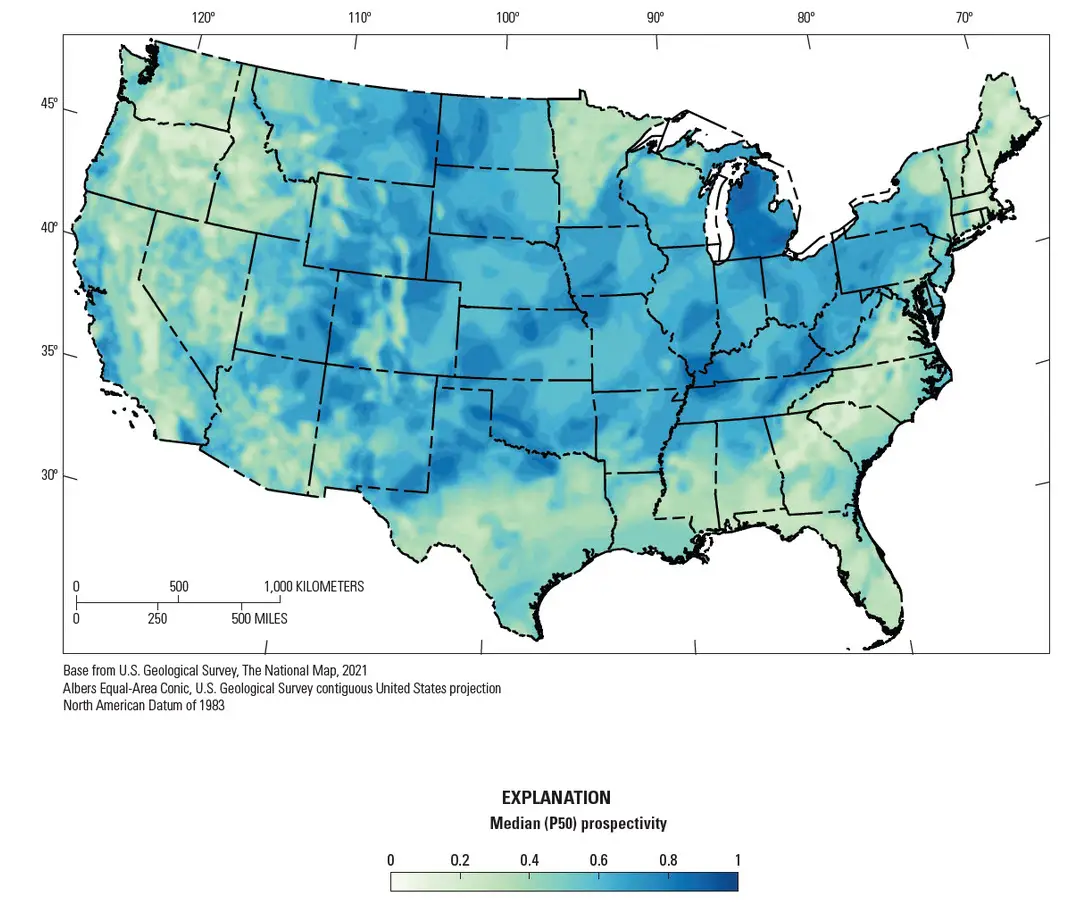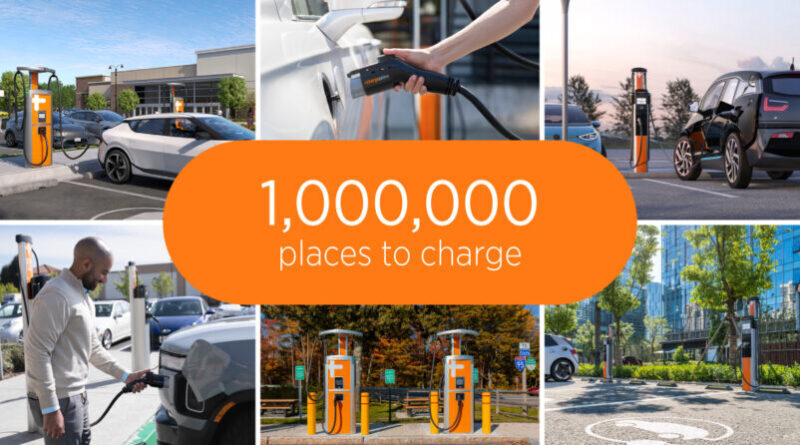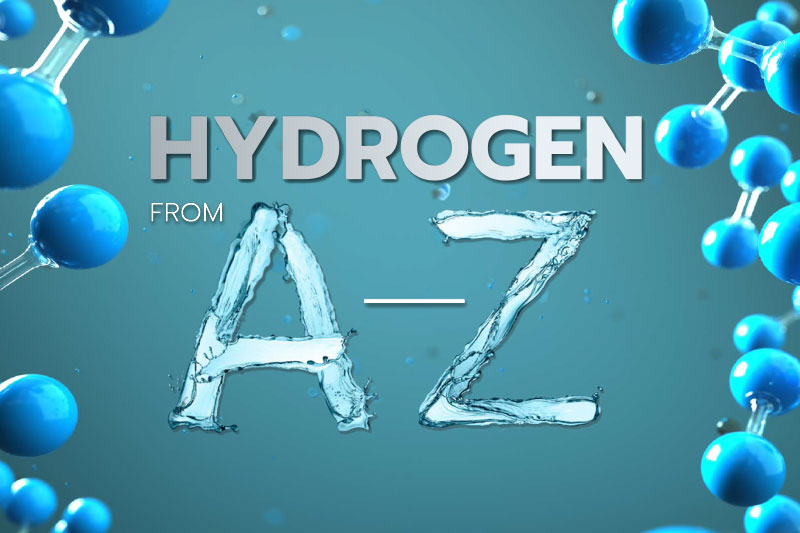Exploring America’s Underground Energy Goldmine – Geologic Hydrogen
Mapping a Future Energy Resource with USGS’s Geologic Hydrogen Discovery Unveiling the Potential of Geologic Hydrogen The United States Geological…

Mapping a Future Energy Resource with USGS’s Geologic Hydrogen Discovery
Unveiling the Potential of Geologic Hydrogen
The United States Geological Survey (USGS) has unveiled a groundbreaking prospectivity map for geologic hydrogen, marking a significant step forward in energy exploration. This map, the first of its kind at a continental scale, identifies regions across the United States with the potential to harbor underground hydrogen deposits.
Highlighted areas include the mid-continent region spanning Kansas, Iowa, Minnesota, and Michigan; the Four Corners area of Arizona, Colorado, New Mexico, and Utah; parts of the California coast; and sections of the Eastern Seaboard. These zones hold promise for subsurface hydrogen accumulation, an energy source long overlooked.
“For decades, the conventional wisdom was that naturally occurring hydrogen did not accumulate in sufficient quantities to be used for energy purposes,” said Sarah Ryker, USGS associate director for energy and minerals. “This map is tantalizing because it shows that several parts of the U.S. could have a subsurface hydrogen resource after all.”
This development becomes even more exciting when paired with estimates from USGS geologists Geoff Ellis and Sarah Gelman. Their recent paper calculated that the recoverable energy content of geologic hydrogen could be twice the energy in all proven natural gas reserves globally. While challenges exist, such as depth and recoverability, the map is a pivotal starting point in piecing together hydrogen’s potential role in a sustainable energy future.
Understanding the Science Behind the Map
Geologic hydrogen forms in the Earth’s subsurface, primarily as a byproduct of geochemical reactions. This resource differs fundamentally from “green hydrogen,” which is produced using renewable energy to split water molecules, and other forms of hydrogen derived from industrial processes.
The USGS’s map combines geological principles to assess regions with the right combination of hydrogen sources, reservoir rocks, and seals—key elements needed to trap the hydrogen underground. Higher prospectivity areas, represented in deep blue on the map, indicate regions more likely to hold substantial hydrogen deposits.
Sarah Gelman explained, “We showed there is a significant potential for geologic hydrogen as an emerging energy resource. The next logical step was to find where it might be in the United States – and for that, we had to develop a methodology.” The map is just the foundation, set to be refined and expanded as research advances.
Recent advancements in subsurface imaging technologies, data modeling, and geophysical tools have played a vital role in making this feat possible. The integration of cutting-edge techniques allows researchers to decipher signals from deep within the Earth, identifying geologic structures conducive to hydrogen storage.
Why the Discovery Matters
Hydrogen is often considered a potential game-changer in the push to decarbonize energy systems. Unlike oil and natural gas, which heavily contribute to greenhouse gas emissions, geologic hydrogen burns cleanly, emitting water vapor rather than carbon dioxide.
The implications extend beyond energy production. Geologic hydrogen could serve as a low-cost feedstock for critical chemicals like ammonia, which is used in fertilizers, or methanol, a key component in industrial synthesis. Harnessing domestic hydrogen sources also means reducing reliance on international energy markets, bolstering energy security.
However, experts caution that much work lies ahead. Geologic hydrogen exploration remains in its infancy, with significant questions about economic viability. Some deposits may be too deep or diffused to extract affordably. That noted, initiatives like this map jumpstart discussions about how to overcome such challenges.
Current Progress and Potential Timelines
The USGS’s work underscores the importance of collaboration across the science, technology, and energy sectors. While this map anchors discussions around geologic hydrogen’s potential, additional exploration and drilling studies will refine what is actually usable.
Timelines for broader utilization may span a decade or more. First, pilot projects and demonstration studies will test the feasibility of hydrogen recovery in identified high-potential areas. From there, development of the necessary infrastructure—scaling extraction, distribution, and storage—must follow.
Still, ongoing advancements could shave years off these estimates. For instance, innovations in directional drilling and reservoir engineering could make previously unreachable deposits more accessible. Public-private partnerships and government-led projects in hydrogen energy may also accelerate progress, building momentum from this inaugural mapping effort.
Practical Steps to Utilize Geologic Hydrogen Today
While large-scale use of geologic hydrogen may be years away, this discovery calls attention to its near-term possibilities. By combining geologic hydrogen with other developing hydrogen technologies, such as green hydrogen production and fuel cell systems, we can begin forming a more comprehensive energy strategy to meet low-carbon goals.
Businesses and policymakers alike can leverage this map as an input to decide where to focus early research dollars. Additionally, it provides a signal to the energy sector to explore partnerships aimed at hydrogen storage, transport, and broader supply-chain development.
Ultimately, geologic hydrogen adds one more promising option to the toolbox of renewable and clean energy resources. By systematically addressing the uncertainties now, the USGS and its collaborators are providing a foundation that could transform how we think about energy generation and security in the decades ahead.
This early-stage mapping effort, while significant, is just the start. What happens next—the innovation, resourcefulness, and collaboration—will define its true impact. For now, the hydrogen economy has yet another hopeful path to explore.
What's Your Reaction?





























































